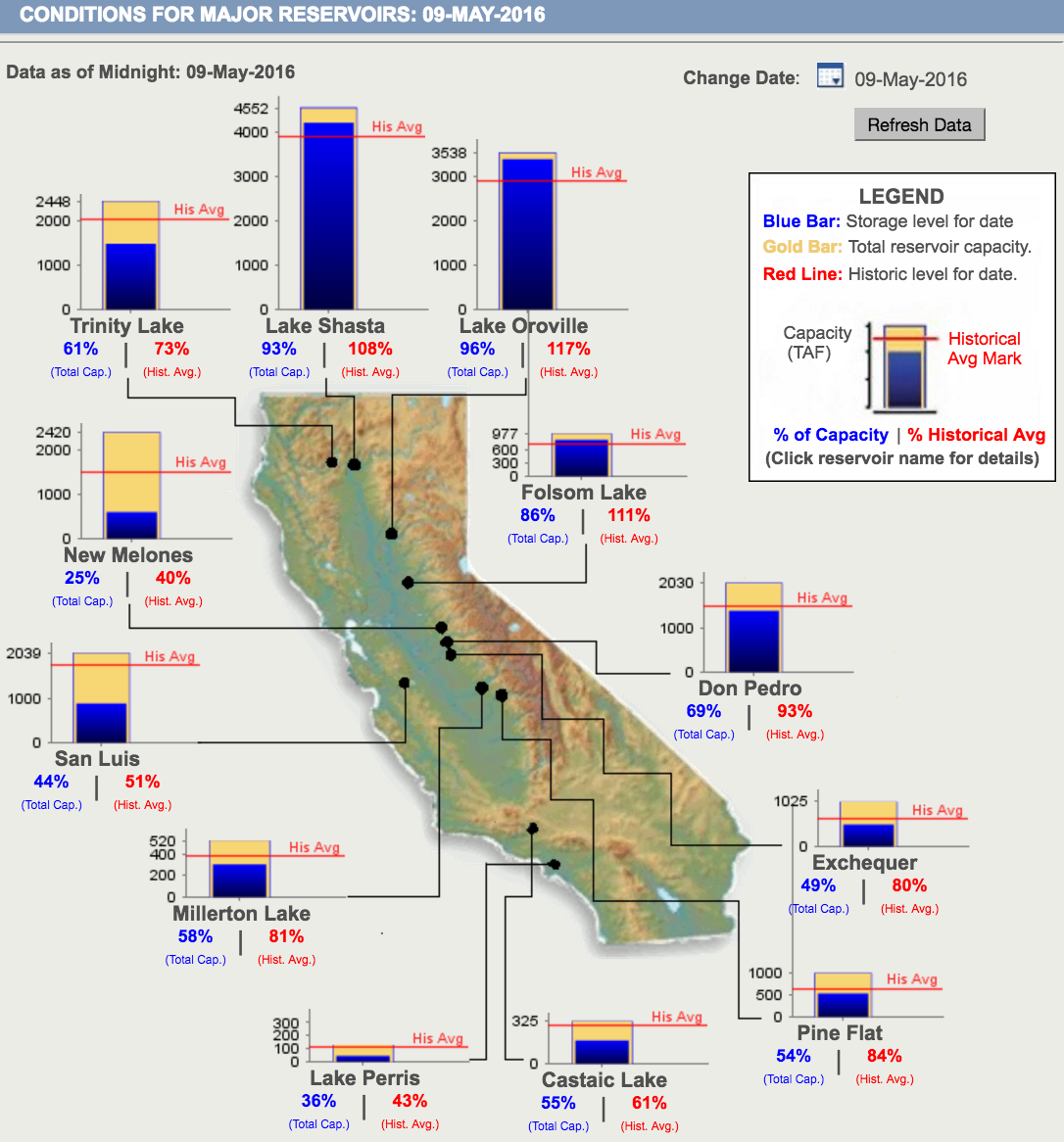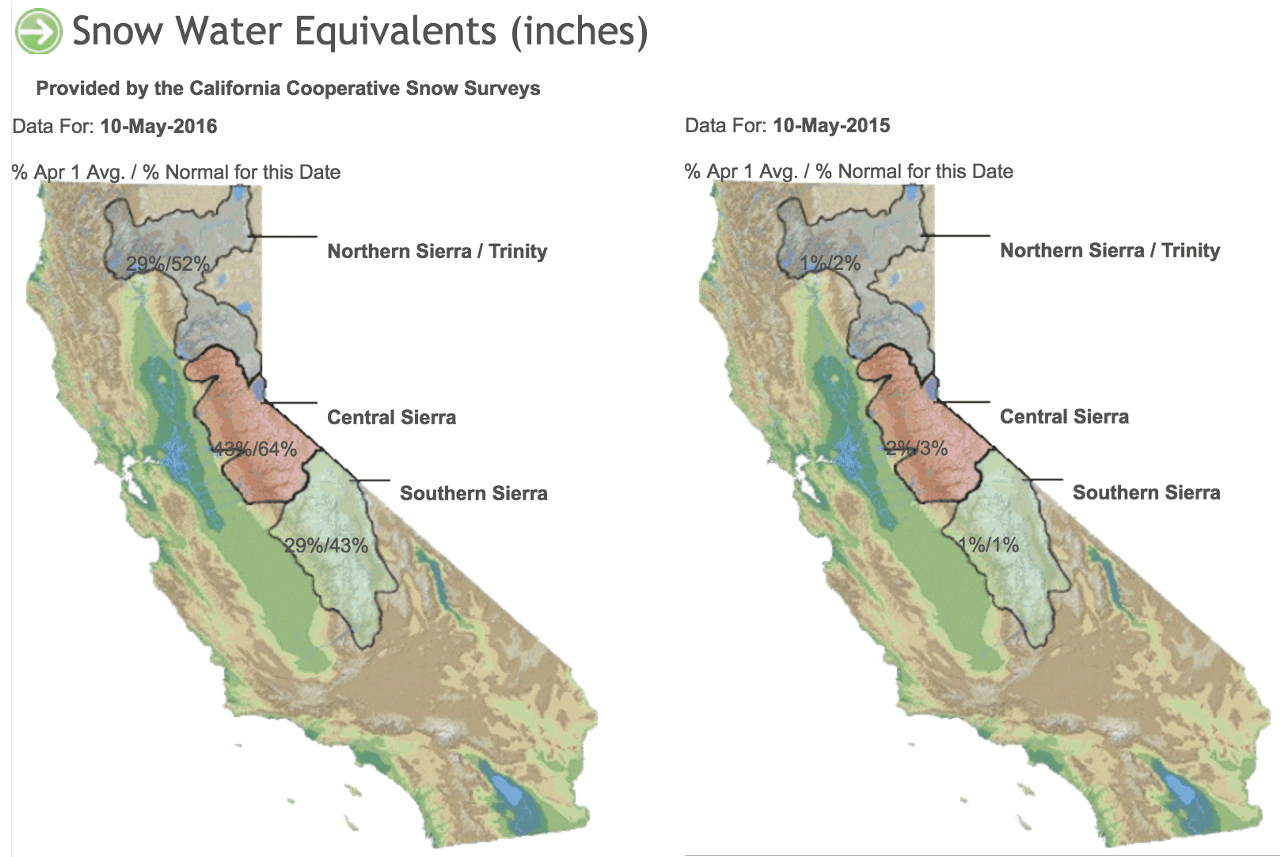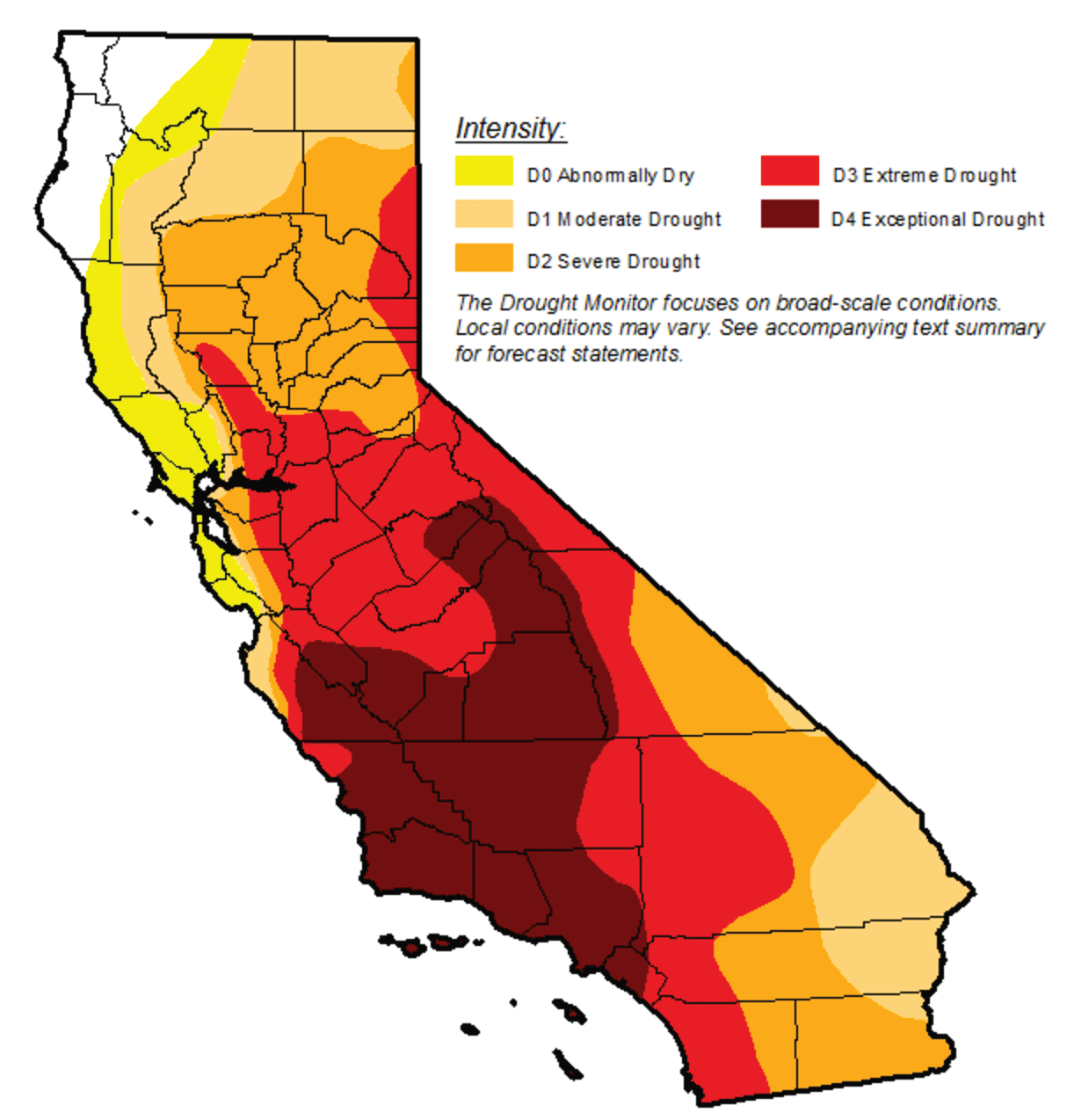As California considers some changes to its water-use rules, we look at the exact state of its historic drought.
By Francie Diep
California Governor Jerry Brown. (Photo: David Paul Morris/Getty Images)
Talk about a mixed message. California is contemplating relaxing some of its water-saving rules at the same time it’s permanently banning other flashier, water-using habits. Governor Jerry Brown issued an order on Monday that will forever forbid hosing off driveways, watering lawns within 48 hours of rain, and irrigating public street meridians, among other activities. “Now we know that drought is becoming a regular occurrence and water conservation must be a part of our everyday life,” Brown said in a statement. Meanwhile, regulators are considering lifting a statewide mandate to cut water use by a quarter or more, the Sacramento Bee reports. Instead, cities would make their own decisions about how much to save, based on local water supplies.
The latter is good news for water agencies, which have long complained about Brown’s statewide conservation rules, the San Jose Mercury News reports. Some environmentalists oppose the shift to city-decided water limits, however, because the duration of the drought remains unknown.
The policy changes come at a time when most of the Golden State continues to suffer severe drought. There have, however, been small glimmers of good news recently. Here’s the situation:
- Some reservoirs in northern California are fuller than usual, but most are below average:

(Graphic: California Data Exchange Center)
- The Sierra Nevada snowpack, which provides one-third of California’s water, remains much lower than is typical for this time of year. Yet the situation is still far improved over last year, when the Central Sierra had just three percent of its usual snowpack — and the Southern Sierra, one percent:

(Maps: California Data Exchange Center)
- The large majority of the state is still in severe, extreme, or exceptional drought, as defined by the United States Drought Monitor:

California’s drought conditions as of May 3, 2016. (Map: Brian Fuchs/National Drought Mitigation Center)
What’s in store for the future? The National Weather Service predicts continued drought for most of the American West through July. No prediction is available immediately after that. Meanwhile, severalstudies suggest California will face more droughts in the long term. What will happen one year or five years from today, however, remains uncertain.

||




